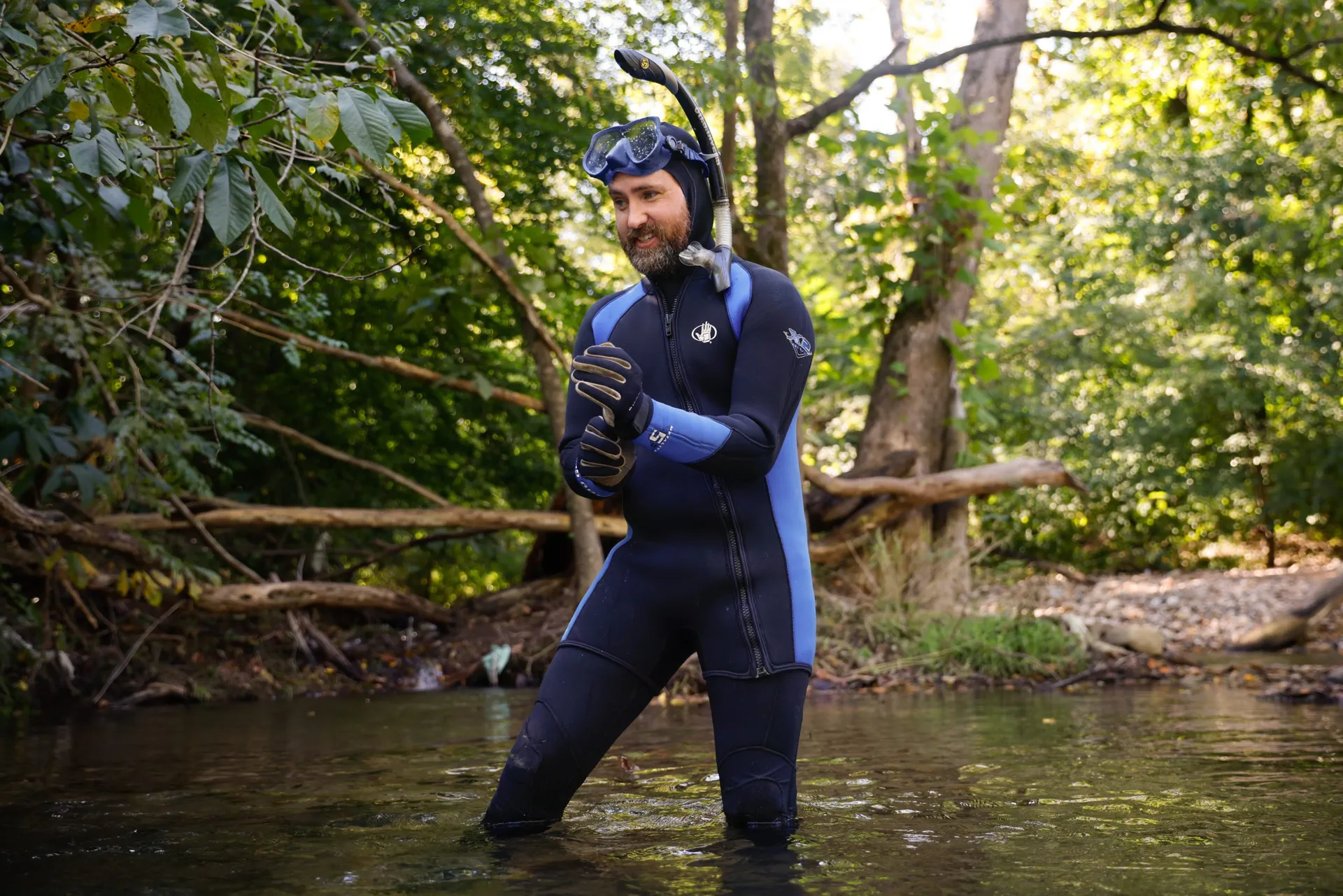On a late summer morning under a cloudless cornflower sky, a troupe of scientists from the Tennessee Aquarium and Thrive Regional Partnership squeeze into wetsuits on the shoulder of a rural North Georgian highway in preparation for a decidedly unusual hunt.
Descending to the sandy banks of Holly Creek, a pristine, tree-sheltered tributary of the Conasauga River, the team members pause — snorkels and nets in hand — to discuss how best to track down their elusive quarry: the Bridled Darter.
Named for a dark lateral band that extends, like a horse’s bridle, around its snout, the Bridled Darter is only found in streams and creeks in the Etowah River and Conasauaga River drainages in Georgia and parts of Southeast Tennessee. There, it spends much of its time — fittingly — darting through slower-moving, deeper stretches of water flowing over sand and cobblestone.
Once thought to be stable within its range, the conservation status of this unassuming, gold-and-pearl-bodied fish recently was called into question. A new study by scientists at Yale University published in April found that the known population of Bridled Darters was actually comprised of two genetically distinct species, the Bridled Darter and the newly described Etowah Bridled Darter.
The Yale team’s findings effectively divided the Bridled Darter’s population in half, necessitating additional research to determine if it or the Etowah Bridled Darter were threatened and in need of additional protections.
Hence the day’s snorkel-bound hunt, says Dr. Bernie Kuhajda, an aquatic conservation biologist with the Tennessee Aquarium Conservation Institute.
“Now that they have been found to have a more highly restricted range, they’ll be reconsidering in the future whether to federally list one or both of these species,” he says. “We’re concerned that habitat degradation — a lot of siltation and other factors — has really caused this fish to disappear from several areas.”
In many cases, field work to assess the biological richness of a waterway is done with backpack electro-shockers that apply current into the water to temporarily stun fish, making them easy to count. For work with imperiled (or potentially imperiled) species, however, Aquarium scientists often opt for the use of seine nets that can passively collect species carried into them by the current or startled into it by conservationists before being lifted out of the water.
Unlike many darters, who spend much of their time on the bottom of the waterway, Bridled Darters have a swim bladder, which makes them more nimble at evading a seine net. For this particular hunt, then, a different tactic was required.
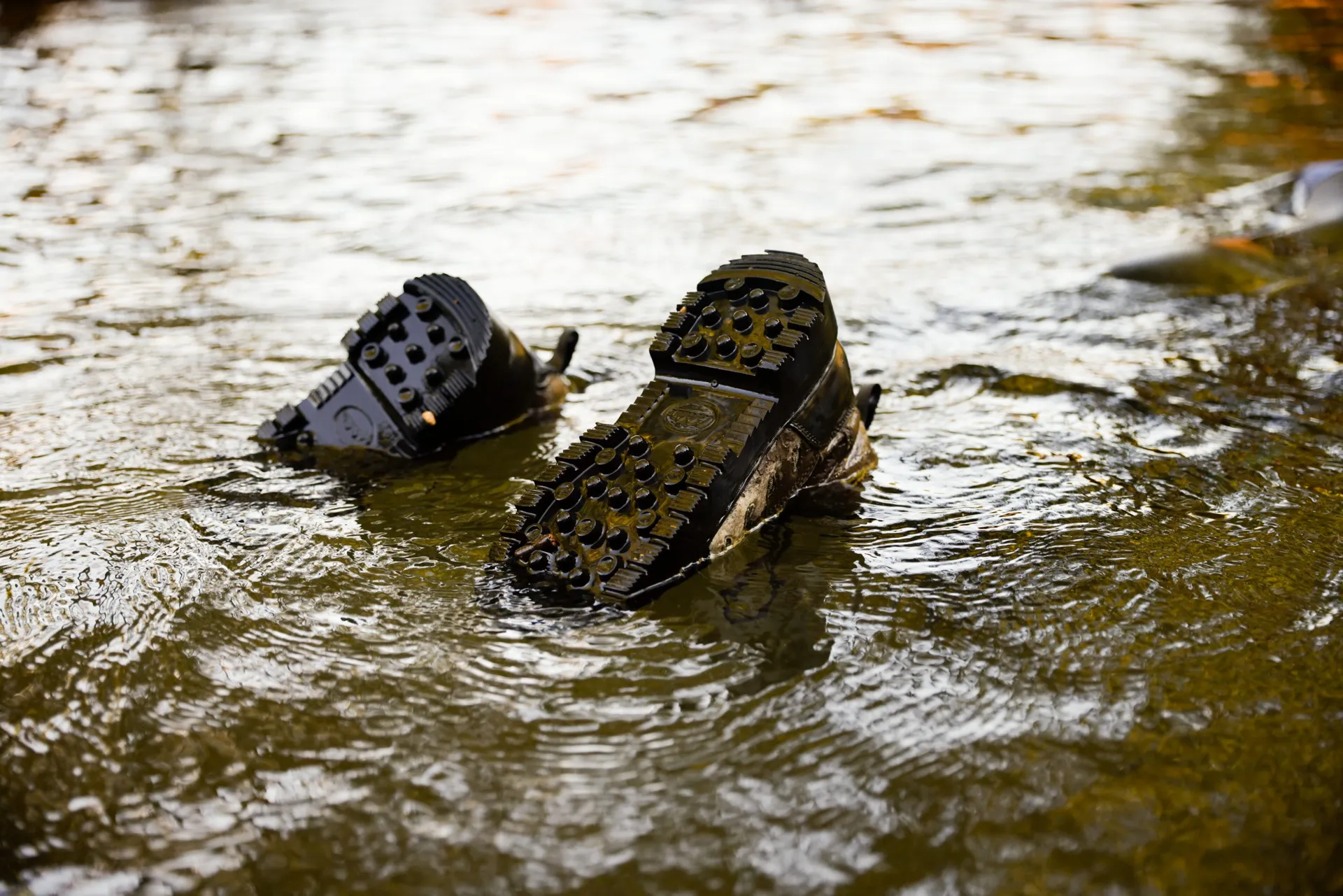
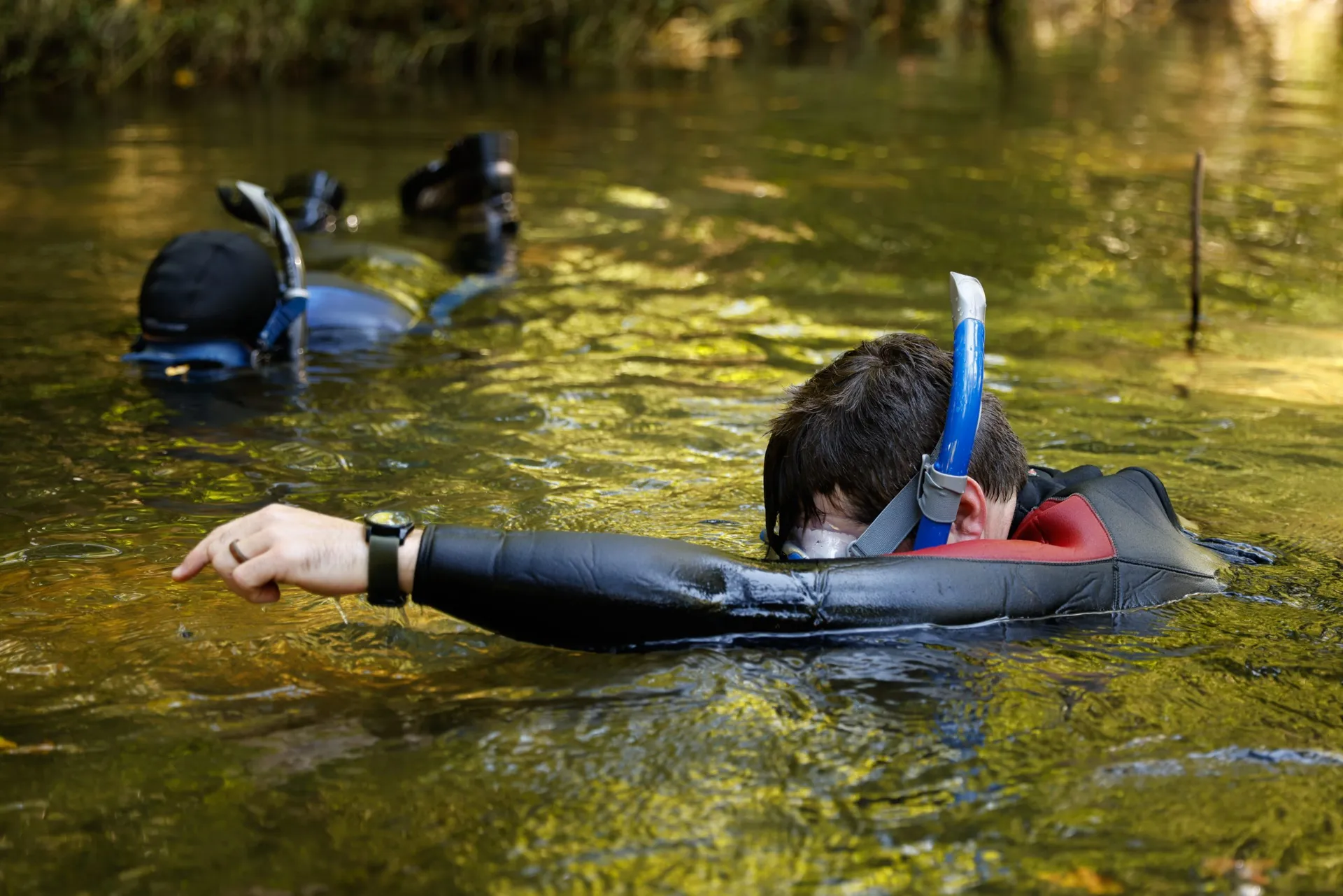
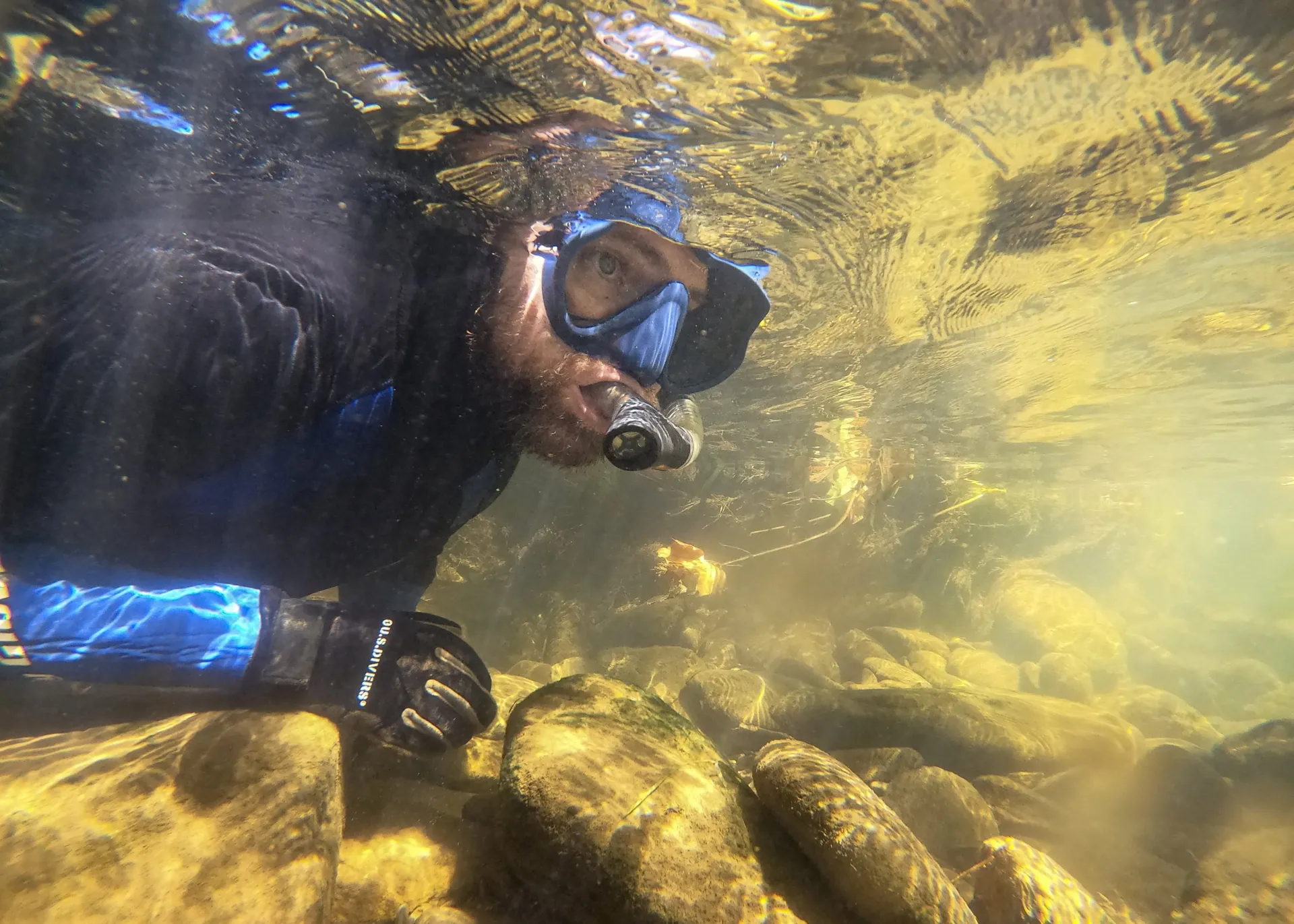
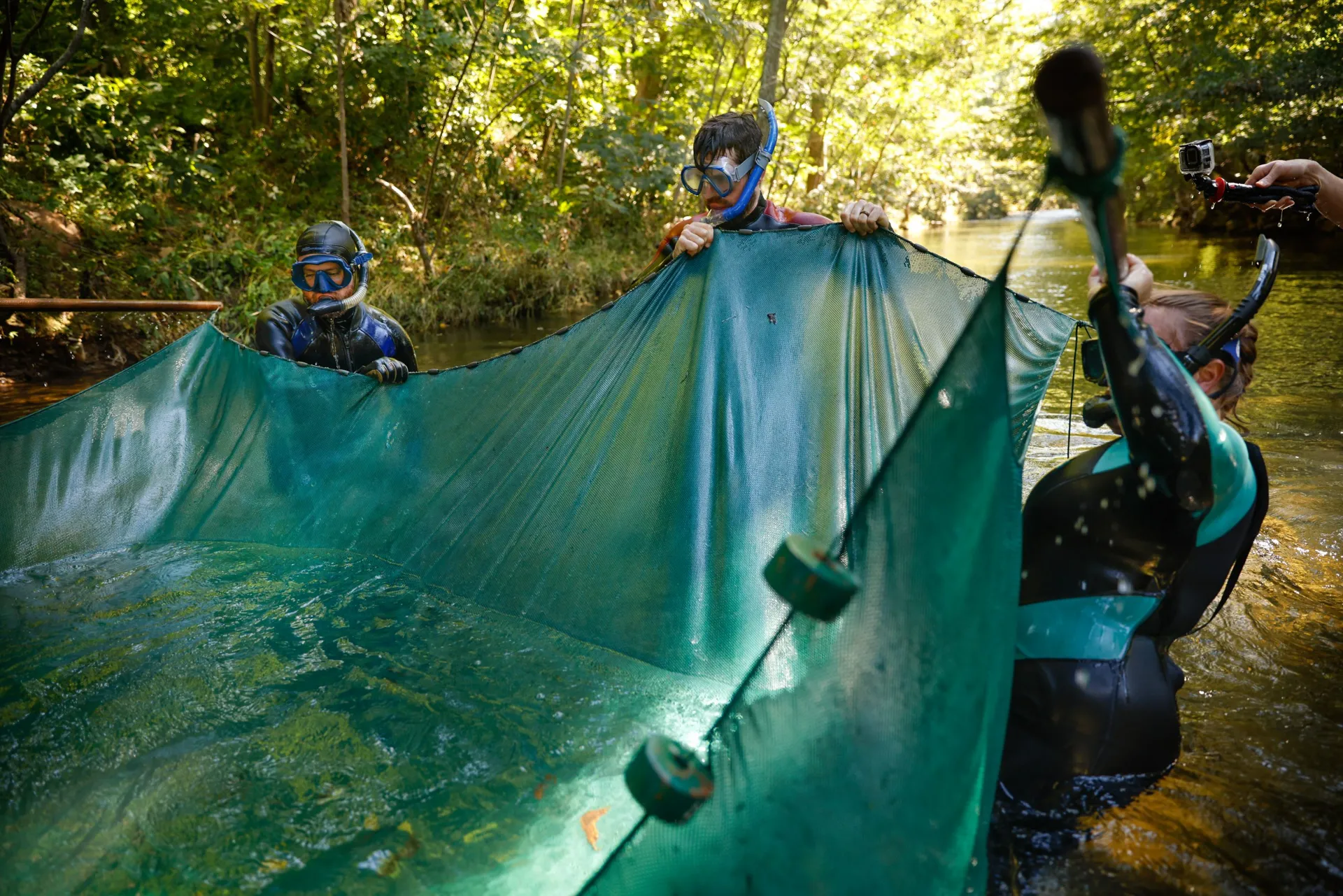
“Bridled Darters are very sneaky, and using seine nets to find them is extremely ineffective,” Kuhajda explains. “A lot of darters, when you put a mask and snorkel on and come up to them, they’re like, ‘Hey, what’s going on?’ They check you out.
“Bridled Darters see you and take off. It’s just another challenge in trying to work with this fish because they’re really cautious.”
So to collect the 30 Bridled Darters the team hopes to find in each of eight populations, they must seek out their prey on its home turf.
Floating, mask down, in the water, a team of three to four snorkelers methodically work their way upstream through the clear water, eyes peeled for Bridled Darter sightings. When one is found, a spotter indicates its location, and Kuhajda and an assistant deploy a seine net nearby. Carefully, snorkelers then work in tandem to herd the fish into the net, where it can be isolated and lifted out.
“It’s more hunting and herding than it is fishing. It’s really fun,” Kuhajda laughs.
But it can also be unpredictable.
“You never know, with this method of catching fish, if you’re going to get three in a day or 13,” he adds. “We were really going to be pretty happy with five and very excited if we got 10.”
It’s more hunting and herding than it is fishing. It’s really fun.
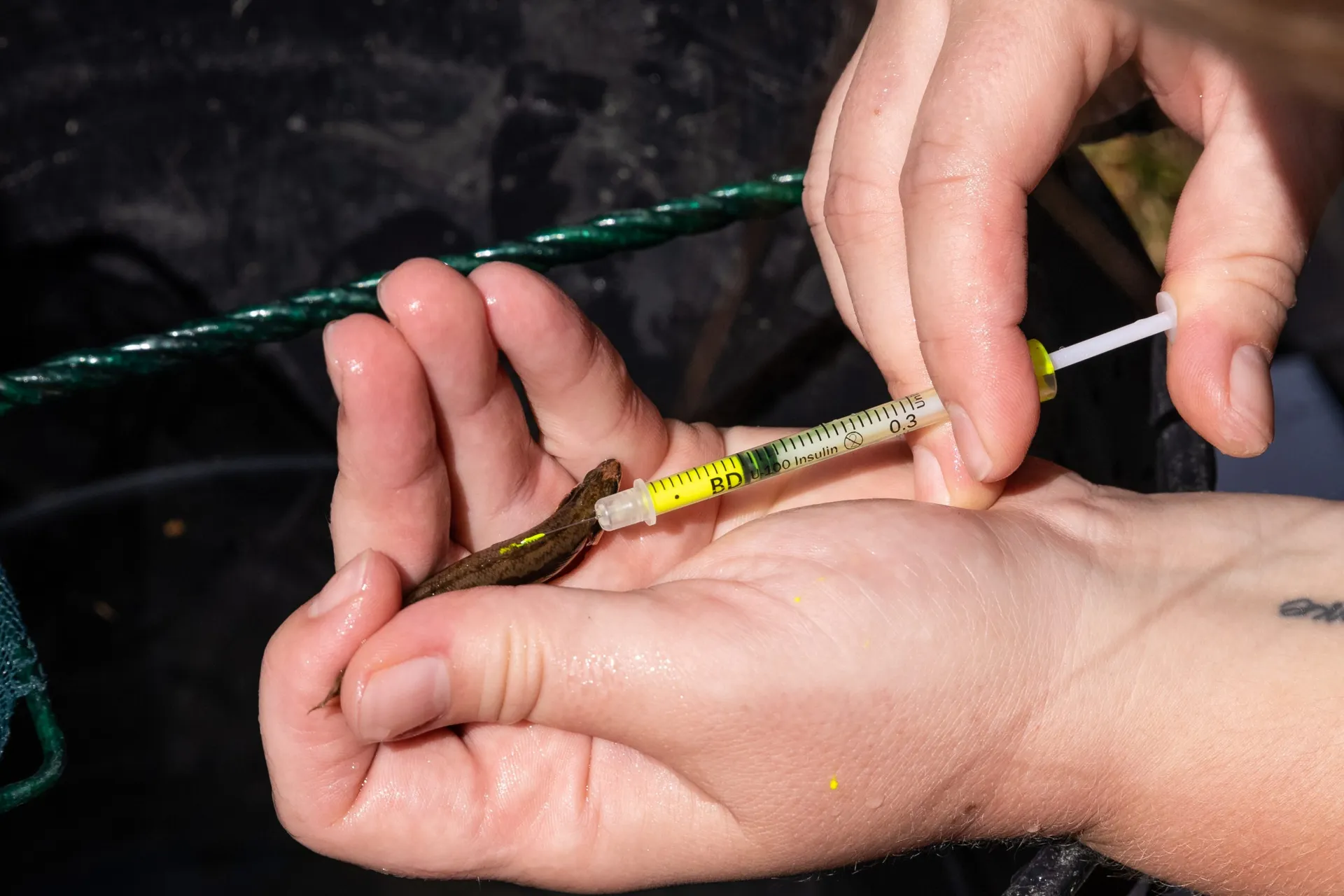
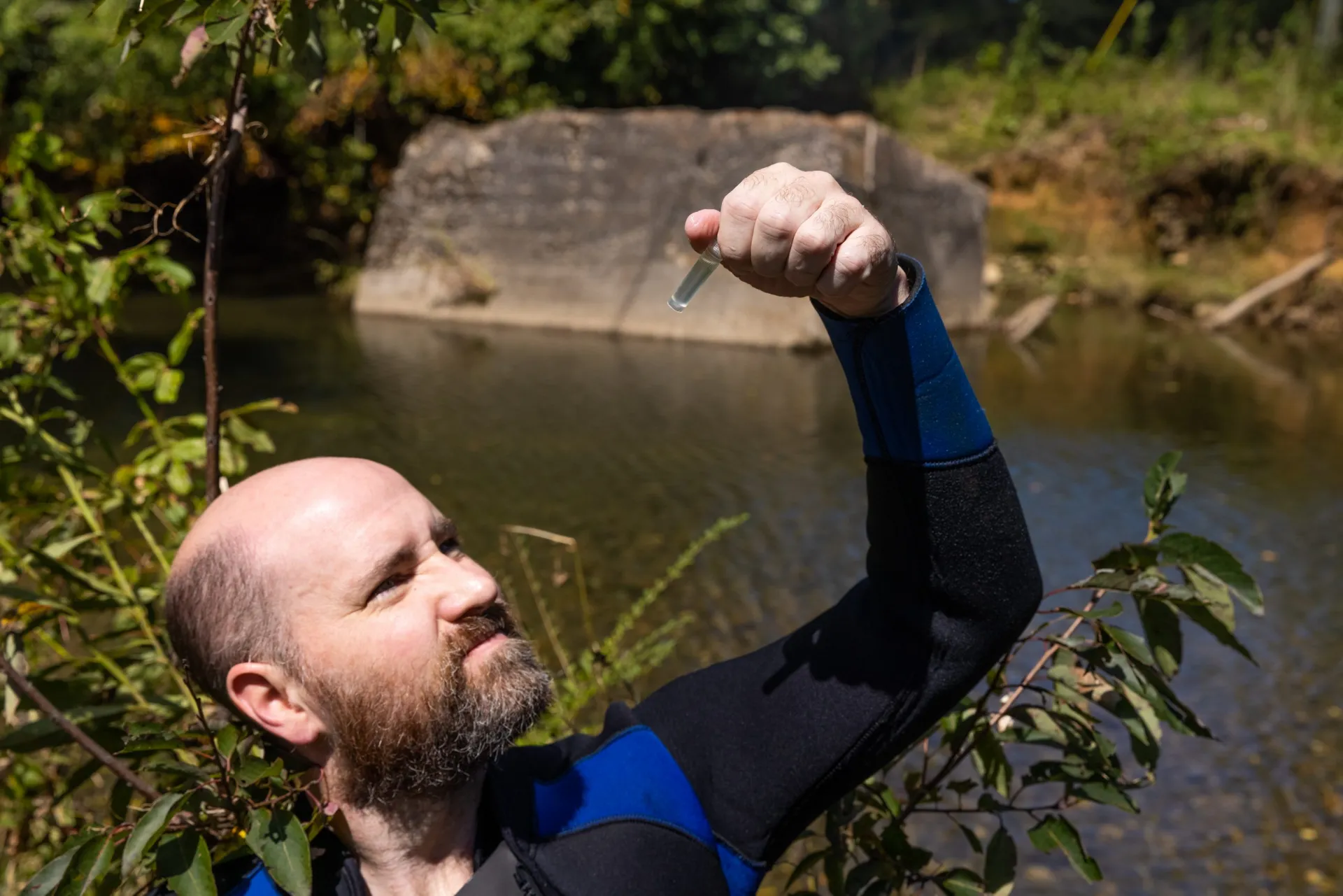
By day’s end, however, the team manages to collect 15 individuals, including 14 adults and a single juvenile. This impressive haul puts them halfway to the desired take for this population, the second of eight they’ll be examining during the study, which was funded by a grant from the National Fish and Wildlife Foundation.
The team marks each fish with a brightly colored, safe dye to prevent repeat collection. Additionally, a tiny piece is cut from its tail fin.
The fin clippings from Holly Creek and other collection sites will be sent to Dr. Mike Sandel, an Assistant Professor of Zoology and Coordinator of Conservation Programs at the University of West Alabama. He and his students will analyze the samples to determine the genetic diversity of Bridled Darter within each population.
Armed with this information, U.S. Fish and Wildlife Service will be able to determine if the Bridled Darter warrants listing as an endangered or threatened species, and scientists will be able to plan how best, and where, to focus any future reintroduction efforts.
Matt Reed is the Program Director with Thrive Regional Partnership’s Natural Treasures Alliance, a collective of conservation, outdoor recreation and land management stakeholders dedicated to long-term landscape preservation in the region surrounding Chattanooga.
For Reed, the visit to Holly Creek wasn’t merely a welcome opportunity to escape the office. Visiting the waterway offered new perspective, not only of the Bridled Darter but, more broadly, the rich biodiversity of the Southeast.
Donning a snorkel to get mask-close to the creek’s abundance of life gave new meaning to the Alliance’s efforts — in partnership with the Aquarium’s Conservation Institute — to ensure development in the region is in harmony with its rich ecology, he says.
“Getting to work with the Bridled Darter was great,” Reed says. “I’ve seen it in the field a couple of times, but never up close and personal in the kinds of numbers we’ve seen today.
“It’s one thing to sit behind a computer and look at models and talk about areas that are impaired versus areas that are still in good health. It’s another thing entirely to get out and get your hands wet.”
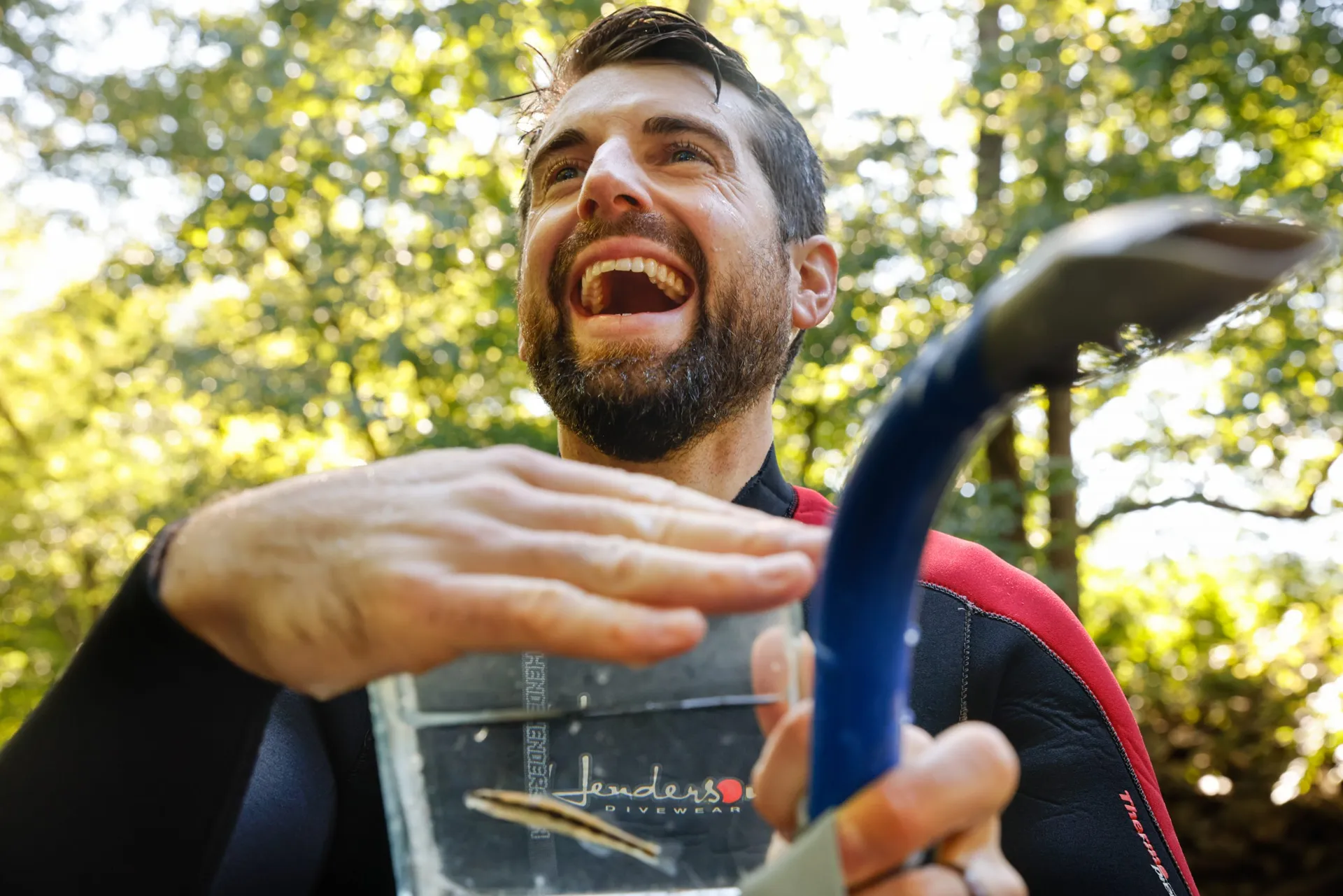
It’s one thing to sit behind a computer and look at models and talk about areas that are impaired versus areas that are still in good health. It’s another thing entirely to get out and get your hands wet.
